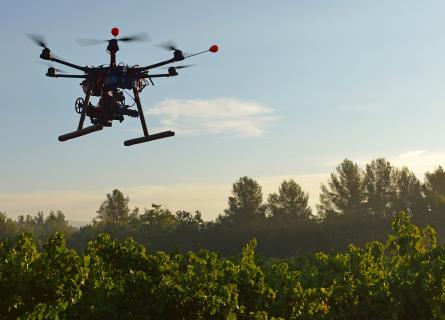
Forest Inventory with Artificial Intelligence
Data that enhances our understanding of the current state of forest resources has never been more readily available. Technological advances in recent years have led to increasingly affordable drones, freely available satellite imagery, climate and geospatial data. LiDAR sensors are now even appearing on mobile phones, as well as rapidly increasing data analysis and storage capacity.
All this is leading to a shift away from forest inventory as a limited, primarily field-based sampling. In its place a new, layered, multi-source approach to inventory collection is becoming possible, with accuracies which may even exceed traditional methods. However, this abundance of data is only useful if processed appropriately, which provides a new challenge to forest managers and decision makers. This challenge must be addressed in smart ways, to maximise the benefits in forest inventory.
The benefits that emerge from the information contained in such large datasets, to create forest inventory data, can be achieved in an efficient and cost effective manner with use of artificial intelligence (AI) and machine learning (ML) methodologies. Using the appropriate algorithms, we can identify relationships between layers of information and then link them with factors which impact forest growth to create an overall forest inventory. This results in outputs of typical inventory variables such as height, stem density, basal area, volume, species distribution and also carbon storage. Additionally, this approach can help to quantify both the uncertainty of these variables and the sources of this uncertainty. This can allow organizations to focus any follow up inventory work on collecting the data that will further improve the accuracy of the forest inventory.
Inventory systems built using regularly updated data sources (e.g. remote sensing data libraries) can also facilitate new systems that enable easy monitoring of change in forests. Disturbance events can be identified shortly after damage occurs, allowing management to take action quickly and minimise impact to forest assets. This is especially useful in cases where areas are large, with forests often remote and not easily accessed for damage assessments to take place.
The use of AI in forest inventory also opens the door to more advanced analyses using complementary data sources and techniques for example:
- Replacing historic climatic data with climate scenarios in an analysis could provide insights into the impact of a changing climate on forest assets.
- Forest management alternative scenarios could be investigated to see how changes to management regimes might impact on forest growth given any given forest’s unique geospatial and climatic conditions.
- Multiple data layers can be analysed with historic damage to create risk maps.
AFRY are uniquely positioned to support organizations with forest operations, to both identify and implement the optimal path of transition to these AI-based inventory systems. Our expert network of forestry professionals and internal AI capabilities, combined with extensive knowledge and partnerships within the ecosystem of forestry focused solution providers, allows us to provide independent advice along a clear and considered path, building on forest organizations’ current inventory systems towards optimized, modern inventory systems. Further to this, our overall expertise around the forest value chain provides insights and capability that can be leveraged to realise additional benefits of improvements further down the value chain.






